Abstract
Five Pseudomonas aeruginosa strains were tested for the utilization of 47 low-molecular-weight compounds as their sole sources of carbon and energy for growth at a concentration of 2.5 g/liter. Of these compounds, 31 to 35 were consumed. Growth experiments in tap water at 15 degrees C were carried out with one particular strain (P1525) isolated from drinking water. This strain was tested for the utilization of 30 compounds supplied at a concentration of 25 microgram of C per liter. The growth rate (number of generations per hour) of strain P1525 in this tap water was approximately 0.005 h-1, and with 10 compounds it was larger than 0.03 h-1. An average yield of 6.2 x 10(9) colony-forming units per mg of C was obtained from the maximum colony counts (colony-forming units per milliliter). The average yield and maximum colony count of strain P1525 grown in tap water supplied with a mixture of 45 compounds, each at a concentration of 1 microgram of C per liter, enabled us to calculate that 28 compounds were utilized. Growth rates of two P. aeruginosa strains (including P1525) in various types of water at 15 degrees C were half of those of a fluorescent pseudomonad. The concentrations of assimilable organic carbon calculated from maximum colony counts and average yield values amounted to 0.1 to 0.7% of the total organic carbon concentrations in five types of tap water. The assimilable organic carbon percentages were about 10 times larger in river water and in water after ozonation.
Full text
PDF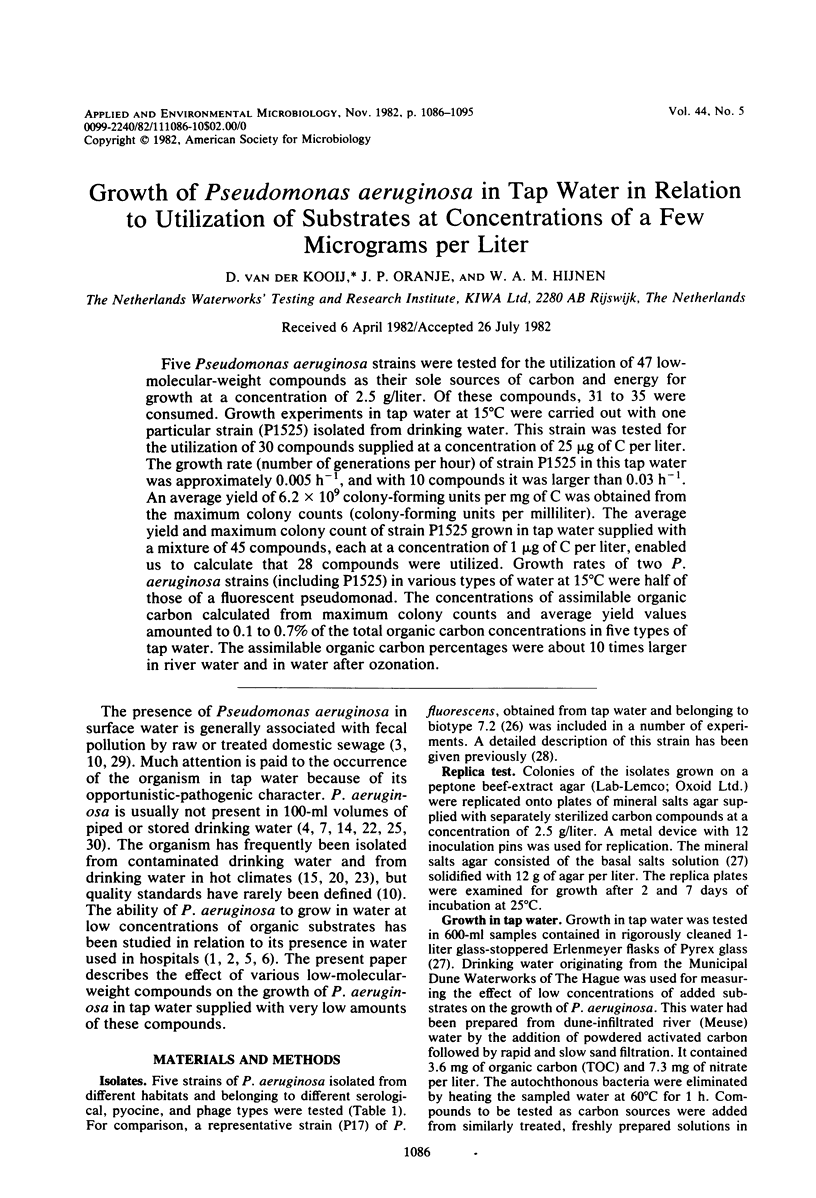
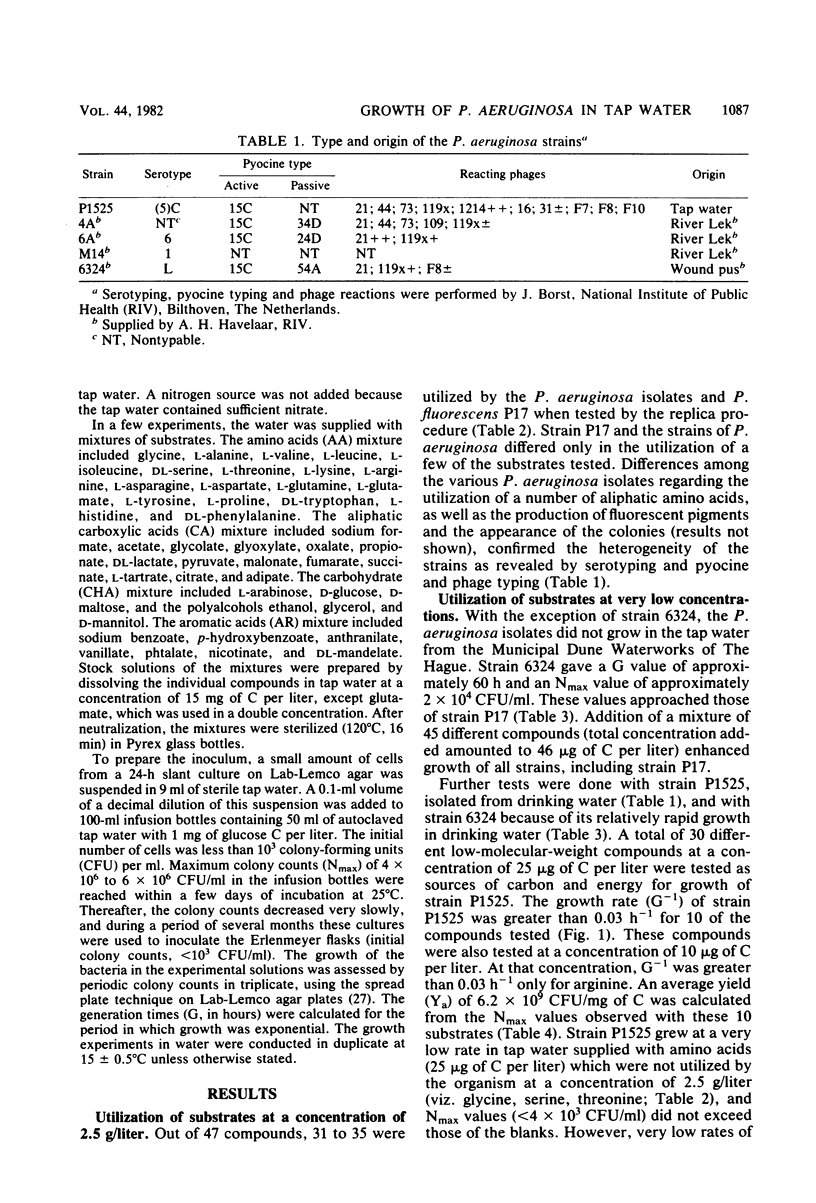
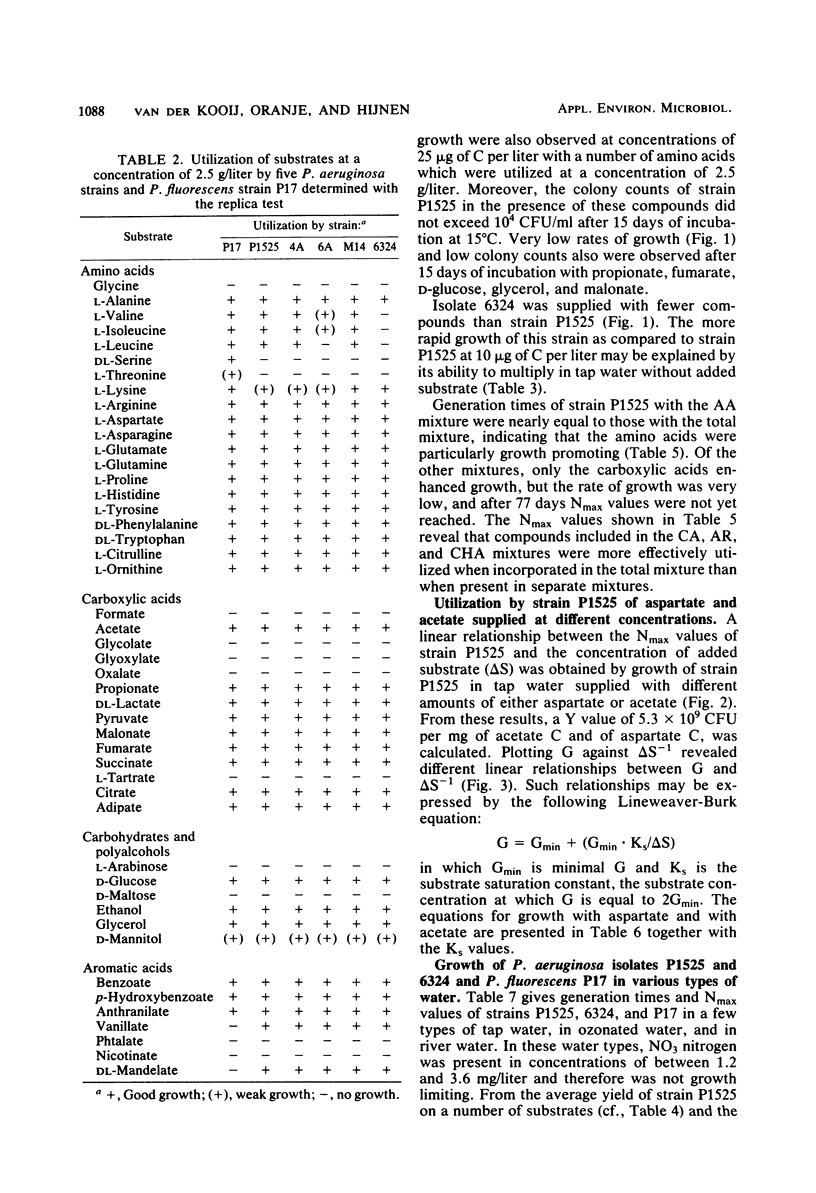
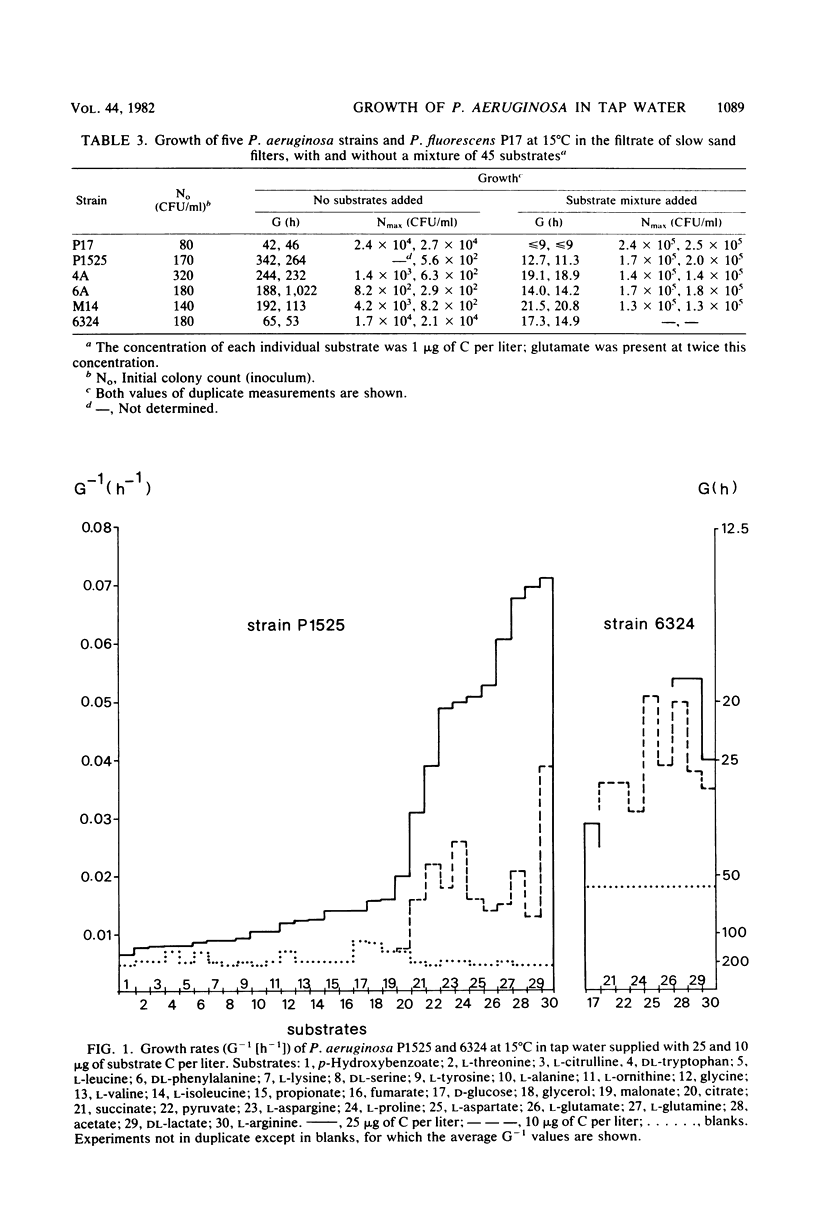
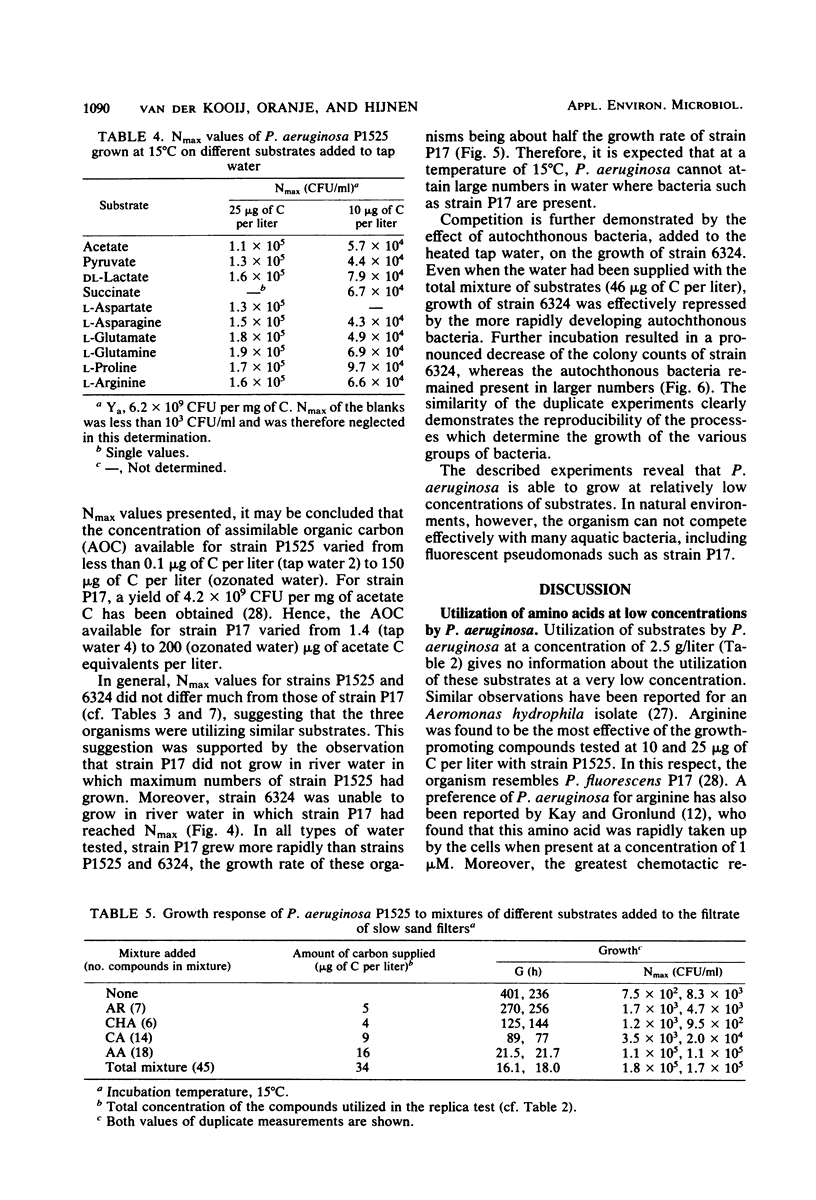
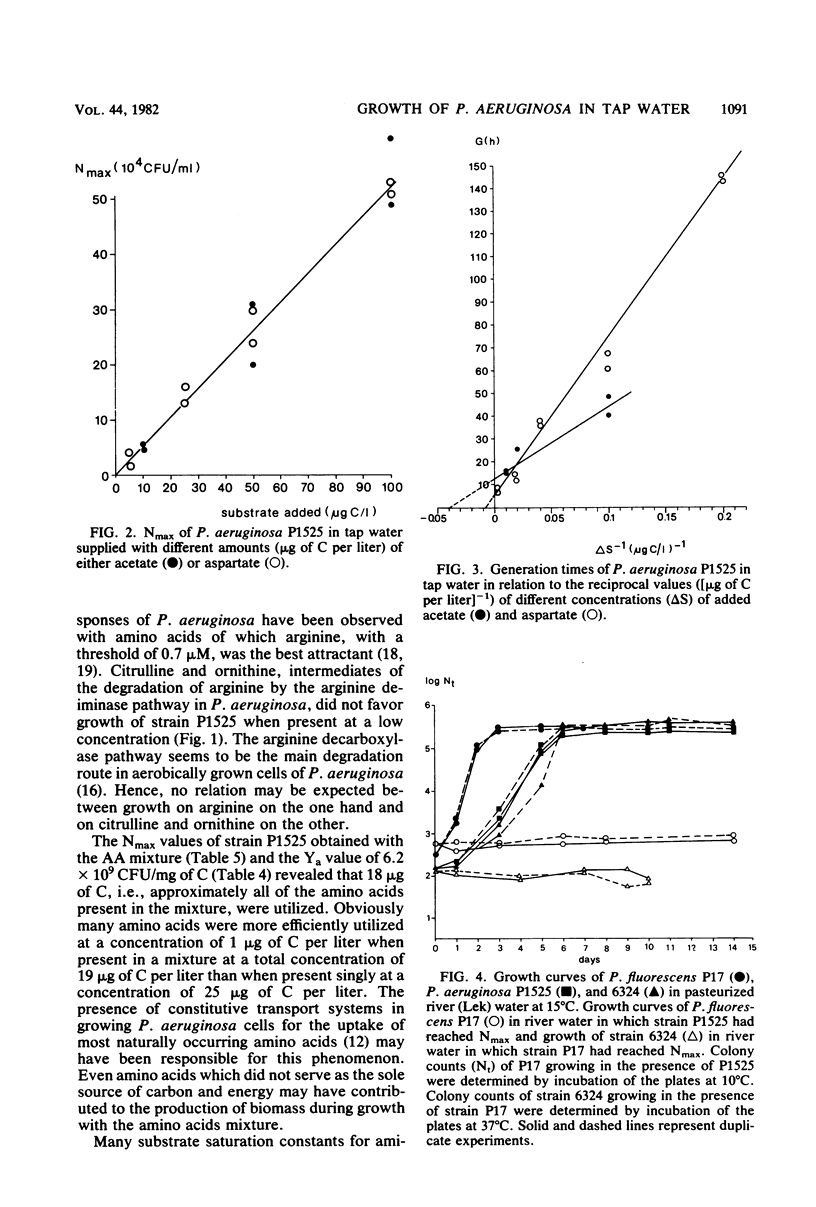
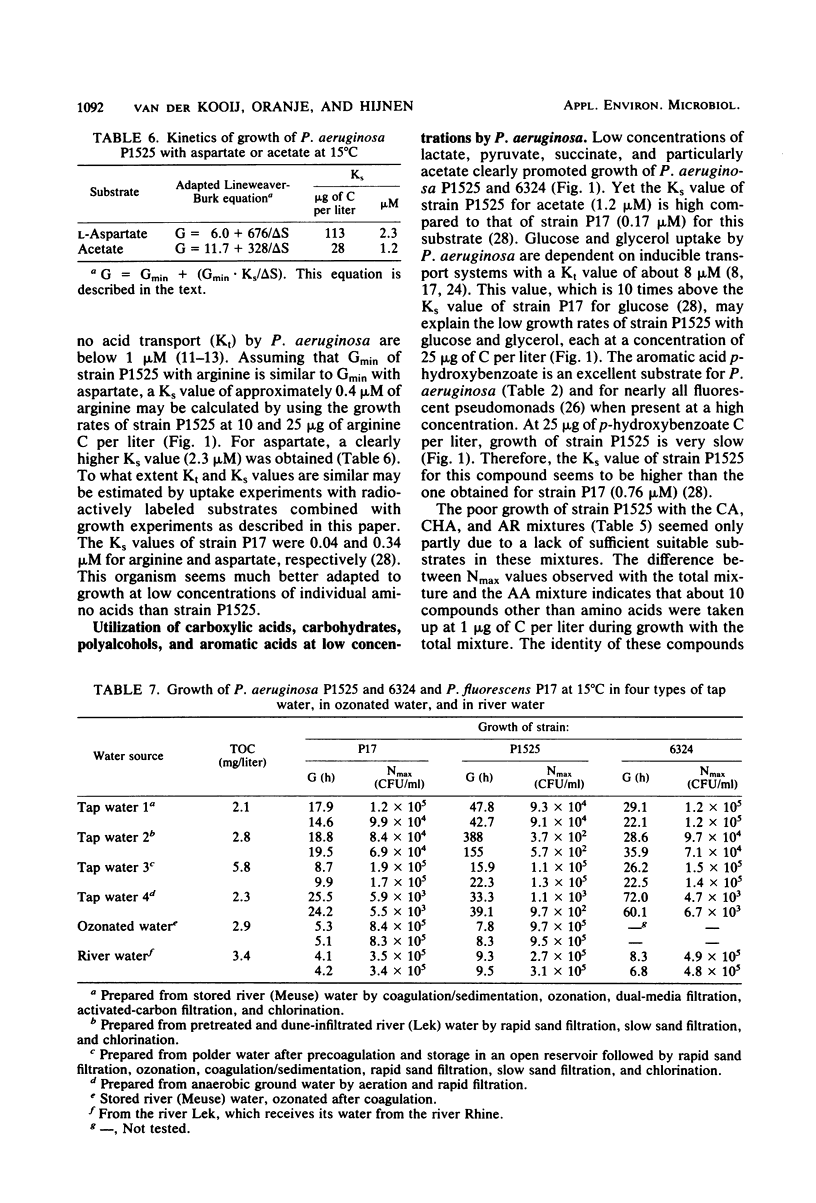
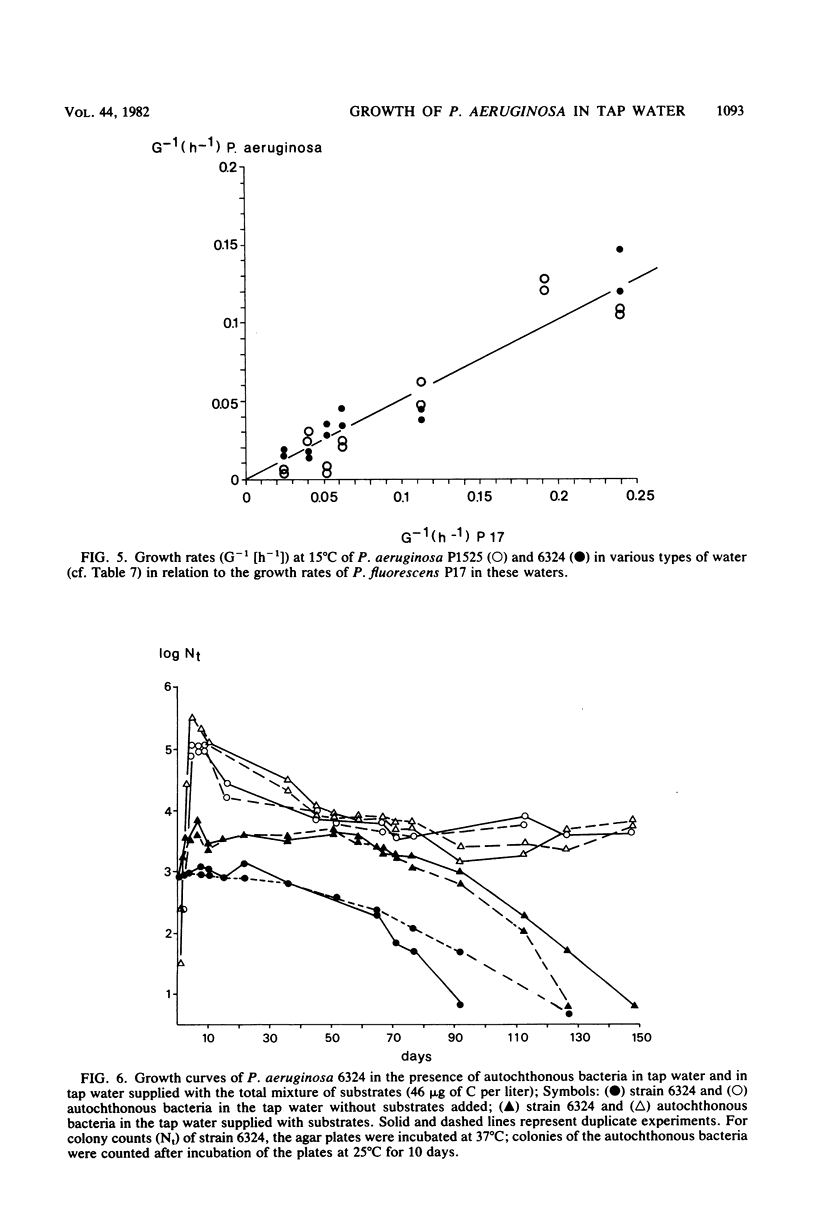
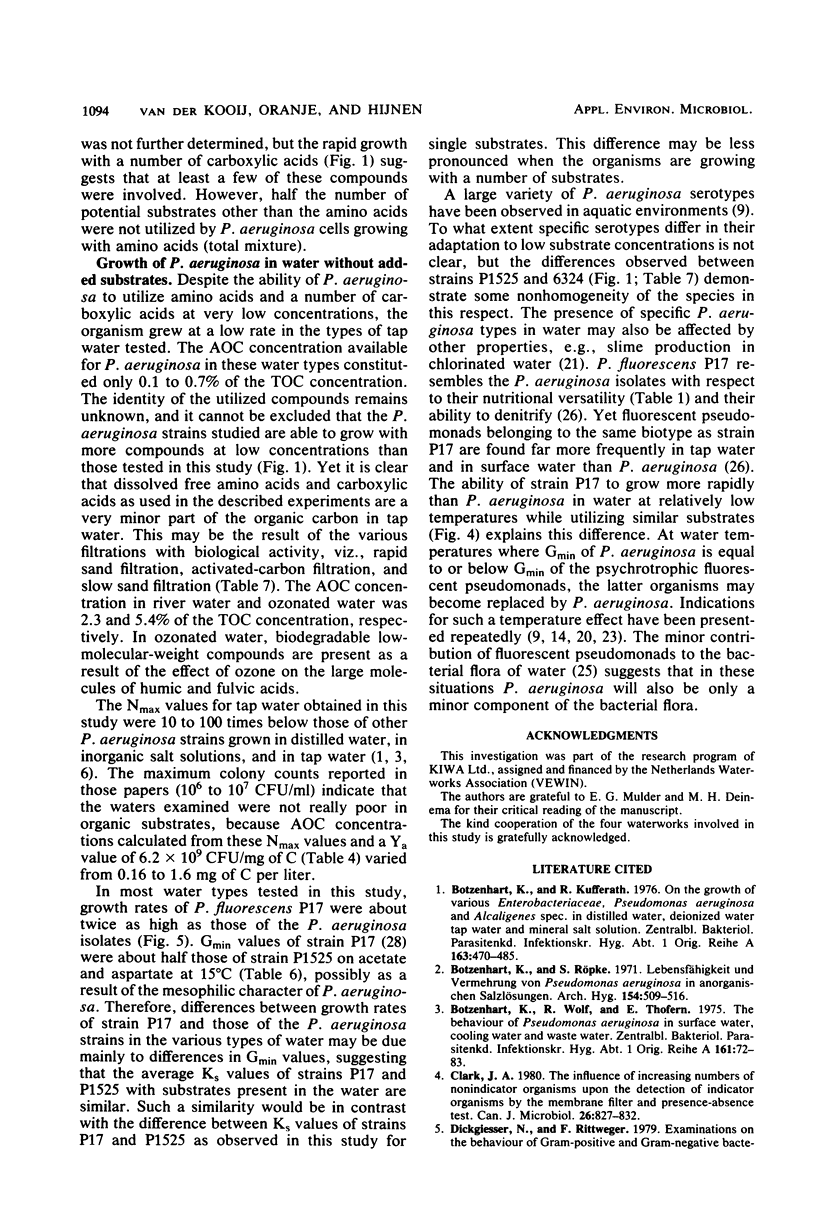
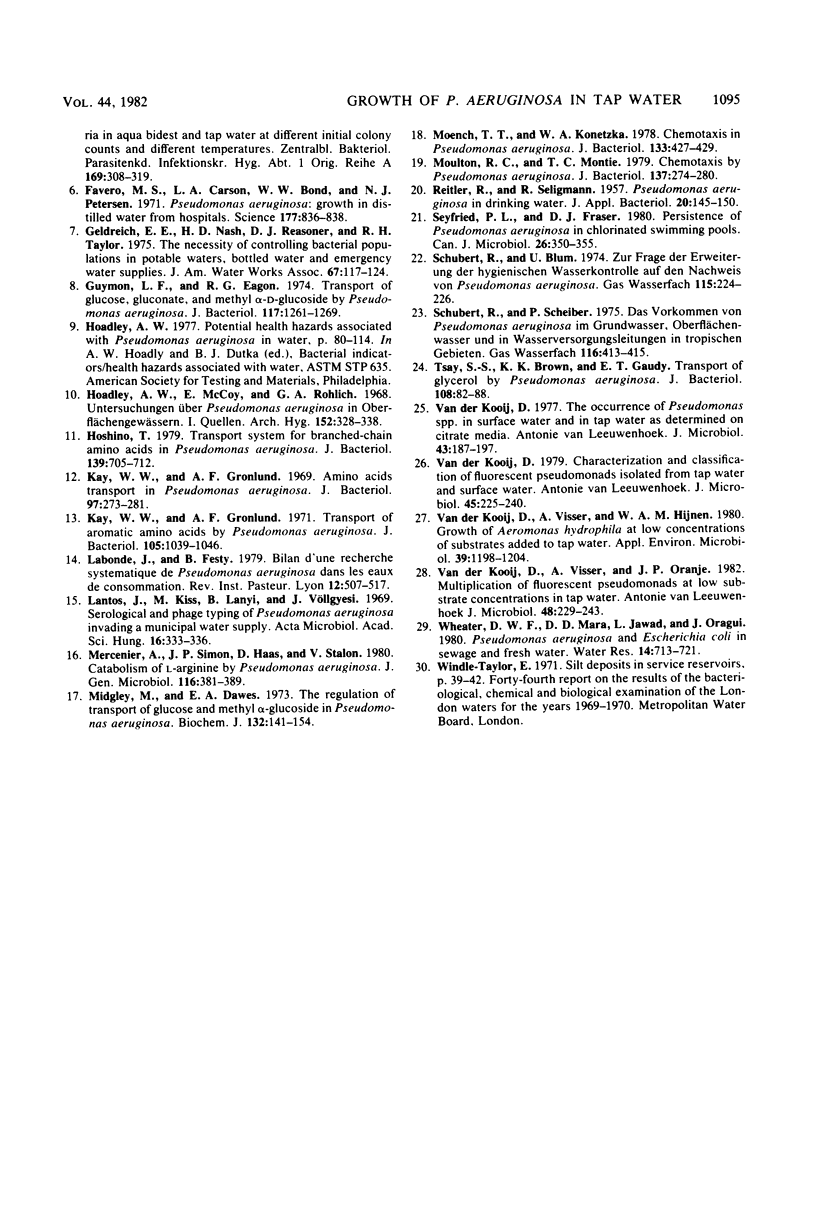
Selected References
These references are in PubMed. This may not be the complete list of references from this article.
- Botzenhart K., Kufferath R. Uber die Vermehrung verschiedener Enterobacteriaceae sowie Pseudomonas aeruginosa und Alkaligenes spec. in destilliertem Wasser, entioniertem Wasser, Leitungswasser und Mineralsalzlösung. Zentralbl Bakteriol Orig B. 1976 Dec;163(5-6):470–485. [PubMed] [Google Scholar]
- Botzenhart K., Röpke S. Lebensfähigkeit und Vermehrung von Pseudomonas aeruginosa in anorganischen Salzlösungen. Arch Hyg Bakteriol. 1971 Apr;154(5):509–516. [PubMed] [Google Scholar]
- Botzenhart K., Wolf R., Thofern E. Das Verhalten von Pseudomonas aeruginosa in Oberflächenwasser, Kühlwasser und Abwasser. Zentralbl Bakteriol Orig B. 1975 Sep;161(1):72–83. [PubMed] [Google Scholar]
- Dickgiesser N., Rittweger F. Untersuchungen über das Verhalten von grampositiven Kokken und gramnegativen Bakterien in Aqua bidest, und Leitungswasser bei verschiedenen Temperaturen und unterschiedlichen Ausgangskeimzahlen. Zentralbl Bakteriol B. 1979 Oct;169(3-4):308–319. [PubMed] [Google Scholar]
- Favero M. S., Carson L. A., Bond W. W., Petersen N. J. Pseudomonas aeruginosa: growth in distilled water from hospitals. Science. 1971 Aug 27;173(3999):836–838. doi: 10.1126/science.173.3999.836. [DOI] [PubMed] [Google Scholar]
- Guymon L. F., Eagon R. G. Transport of glucose, gluconate, and methyl alpha-D-glucoside by Pseudomonas aeruginosa. J Bacteriol. 1974 Mar;117(3):1261–1269. doi: 10.1128/jb.117.3.1261-1269.1974. [DOI] [PMC free article] [PubMed] [Google Scholar]
- Hoadley A. W., McCoy E., Rohlich G. A. Untersuchungen über Pseudomonas aeruginosa in Oberflächengewässern. I. Quellen. Arch Hyg Bakteriol. 1968 Aug;152(4):328–338. [PubMed] [Google Scholar]
- Hoshino T. Transport systems for branched-chain amino acids in Pseudomonas aeruginosa. J Bacteriol. 1979 Sep;139(3):705–712. doi: 10.1128/jb.139.3.705-712.1979. [DOI] [PMC free article] [PubMed] [Google Scholar]
- Kay W. W., Gronlund A. F. Amino acid transport in Pseudomonas aeruginosa. J Bacteriol. 1969 Jan;97(1):273–281. doi: 10.1128/jb.97.1.273-281.1969. [DOI] [PMC free article] [PubMed] [Google Scholar]
- Kay W. W., Gronlund A. F. Transport of aromatic amino acids by Pseudomonas aeruginosa. J Bacteriol. 1971 Mar;105(3):1039–1046. doi: 10.1128/jb.105.3.1039-1046.1971. [DOI] [PMC free article] [PubMed] [Google Scholar]
- Lantos J., Kiss M., Lányi B., Völgyesi J. Serological and phage typing of Pseudomonas aeruginosa invading a municipal water supply. Acta Microbiol Acad Sci Hung. 1969;16(4):333–336. [PubMed] [Google Scholar]
- Mercenier A., Simon J. P., Haas D., Stalon V. Catabolism of L-arginine by Pseudomonas aeruginosa. J Gen Microbiol. 1980 Feb;116(2):381–389. doi: 10.1099/00221287-116-2-381. [DOI] [PubMed] [Google Scholar]
- Midgley M., Dawes E. A. The regulation of transport of glucose and methyl alpha-glucoside in Pseudomonas aeruginosa. Biochem J. 1973 Feb;132(2):141–154. doi: 10.1042/bj1320141. [DOI] [PMC free article] [PubMed] [Google Scholar]
- Moench T. T., Konetzka W. A. Chemotaxis in Pseudomonas aeruginosa. J Bacteriol. 1978 Jan;133(1):427–429. doi: 10.1128/jb.133.1.427-429.1978. [DOI] [PMC free article] [PubMed] [Google Scholar]
- Moulton R. C., Montie T. C. Chemotaxis by Pseudomonas aeruginosa. J Bacteriol. 1979 Jan;137(1):274–280. doi: 10.1128/jb.137.1.274-280.1979. [DOI] [PMC free article] [PubMed] [Google Scholar]
- Seyfried P. L., Fraser D. J. Persistence of Pseudomonas aeruginosa in chlorinated swimming pools. Can J Microbiol. 1980 Mar;26(3):350–355. doi: 10.1139/m80-057. [DOI] [PubMed] [Google Scholar]
- van der Kooij D. Characterization and classification of fluorescent pseudomonads isolated from tap water and surface water. Antonie Van Leeuwenhoek. 1979;45(2):225–240. doi: 10.1007/BF00418586. [DOI] [PubMed] [Google Scholar]
- van der Kooij D. The occurrence of Pseudomonas spp. in surface water and in tap water as determined on citrate media. Antonie Van Leeuwenhoek. 1977;43(2):187–197. doi: 10.1007/BF00395673. [DOI] [PubMed] [Google Scholar]
- van der Kooij D., Visser A., Hijnen W. A. Growth of Aeromonas hydrophila at Low Concentrations of Substrates Added to Tap Water. Appl Environ Microbiol. 1980 Jun;39(6):1198–1204. doi: 10.1128/aem.39.6.1198-1204.1980. [DOI] [PMC free article] [PubMed] [Google Scholar]
- van der Kooij D., Visser A., Oranje J. P. Multiplication of fluorescent pseudomonads at low substrate concentrations in tap water. Antonie Van Leeuwenhoek. 1982;48(3):229–243. doi: 10.1007/BF00400383. [DOI] [PubMed] [Google Scholar]


